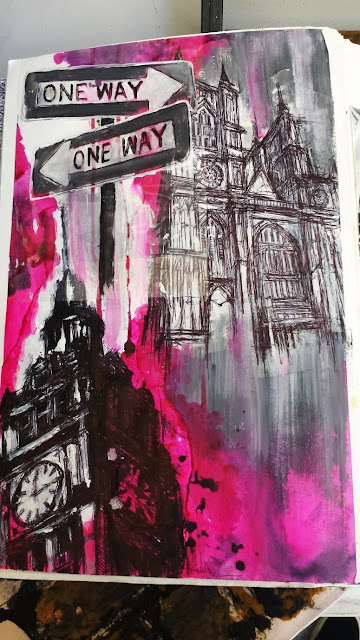I dedicated this piece of Art to Grenfell Tower.
These Images represent my creative journey behind my final outcome, the first image was my initial outcome in April from a 15 hour art exam i sat, i looked at aspects of both Sunga park and Robert Raschenberg's work and tried to merge both styles in my final piece. I used bright vibrant inks to create the dripping dream like effect which mimics Sunga Park however i used blended black ink into some of the bright areas to neutralize the tones and create an almost Graffiti type effect. I added college and road signs using ink and bleach to create a story within the piece by inserting elements inspired by Robert Raschenberg.
However after completing the exam, i worked back into the piece and taking my work home i was subconsciously inspired by the tragic event as i was working into the piece while the news channel was on and started to develop my piece.



















